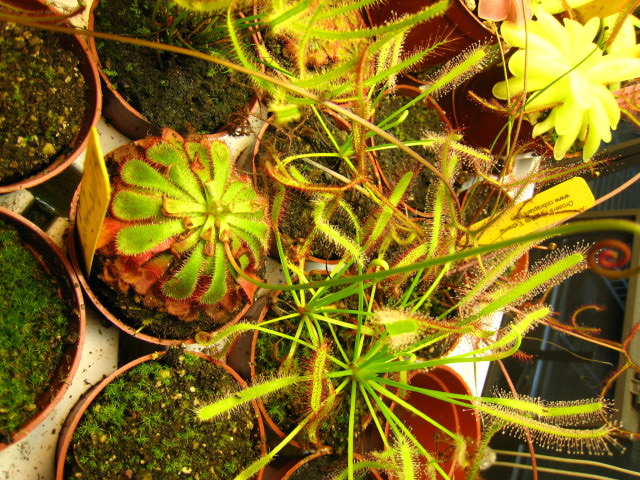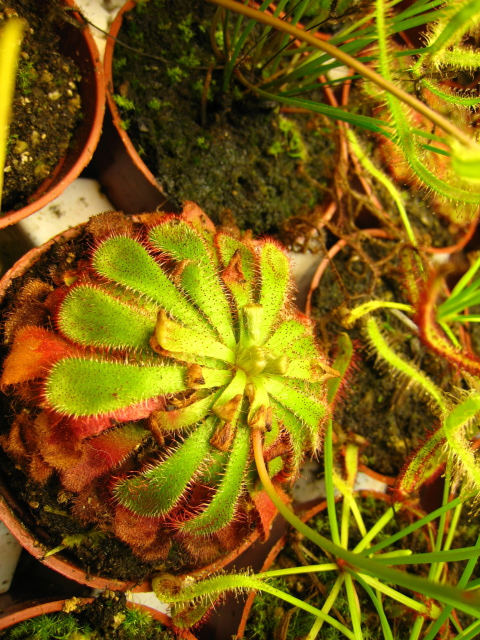Question
 Unhappy Alice Sundew
Unhappy Alice Sundew  Unhappy Alice Sundew 2
Unhappy Alice Sundew 2
After a recent disruptive move, my plants seem to have adjusted and are for the most part doing well. One plant, however--a Drosera Aliciae--seems to suddenly be unhappy. I noticed that the newest rosette of leaves are stunted and not fully developed. The plant was in the process of putting out a flower stalk, but now it seems as if the flower stalk has stopped developing. The older leaves still looked to be in decent condition, with a reasonable amount of dew, however. Based on my past experience in problems with other plants, I considered the possibility that fungus gnat larvae might be causing problems, so I sprayed the plant with systemic insecticide. The short-term effect of that is that some of the older leaves have lost their dew. The plant is growing close to a large, northeast facing window, but it also receives copious light from a T5HO fixture. The Alice sundew sits right next to some Cape sundews and fork-leafed sundews, and they are all thriving; particularly with the Cape sundews, I thought that the Alice sundew likes pretty much the exact same growing conditions. I use distilled water only for these plants. I'm not sure what's going on; any advice you could provide would be appreciated.
AnswerWhile both aliciae and capensis have similar growing conditions, aliciae is more temperamental of the two. It really prefers very stable conditions. Anytime you disrupt its environment, it seems to express its extreme displeasure! So all the symptoms you're seeing could be attributed to the move. I've seen this in my own collection.
Fungus gnats could also be a problem, and spraying your plant was a good idea. For now, you simply have to wait. You could also try moving the plant off to the side where it could get slightly less light. This will cool down leaves slightly to encourage larger leaves. (Like capensis, this species will produce smaller leave when the temperature increases.) Everything else is good, so it's a matter of giving your plant more time, possibly up to a couple months. This is how long it usually takes for the plant to acclimate to drastic changes.
Good growing!
Jacob Farin







